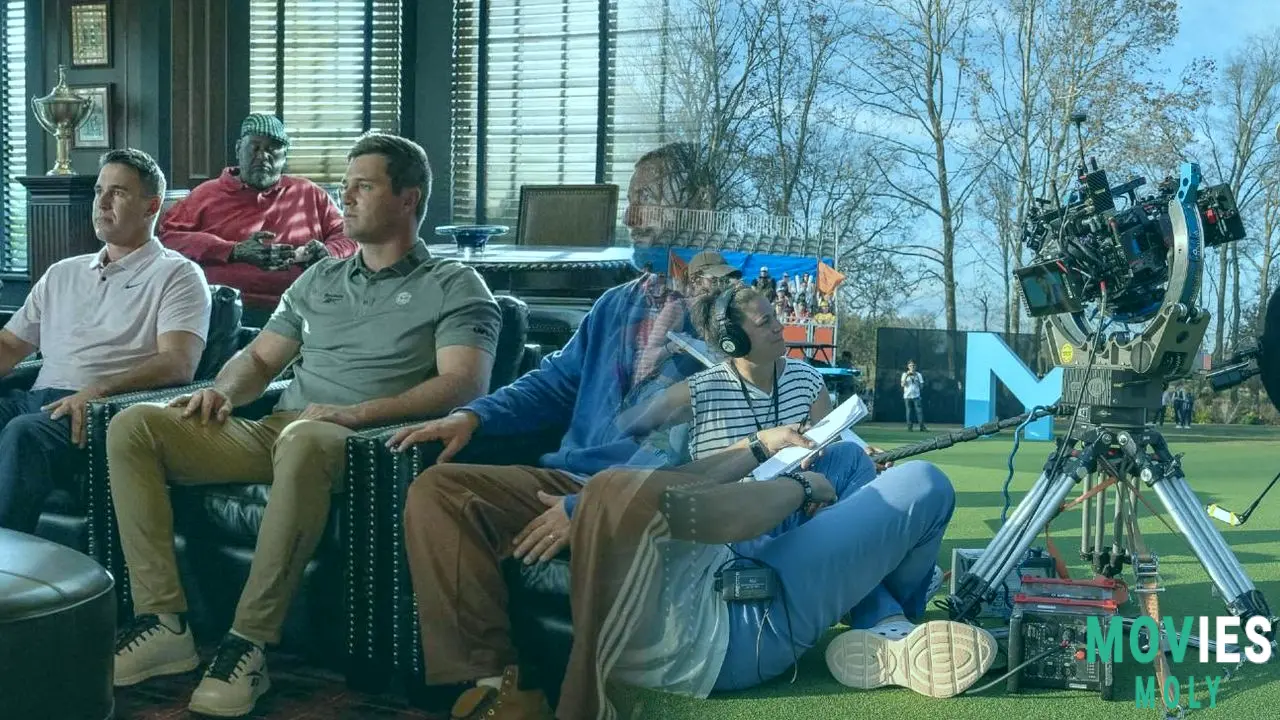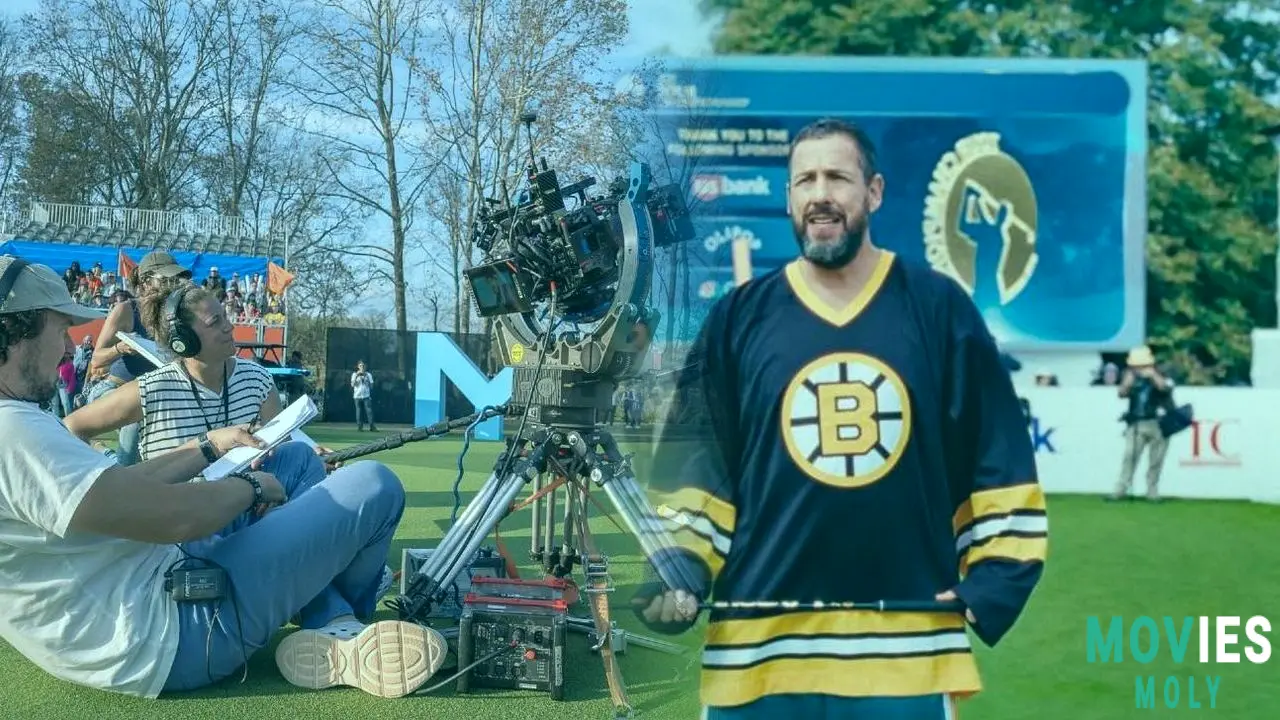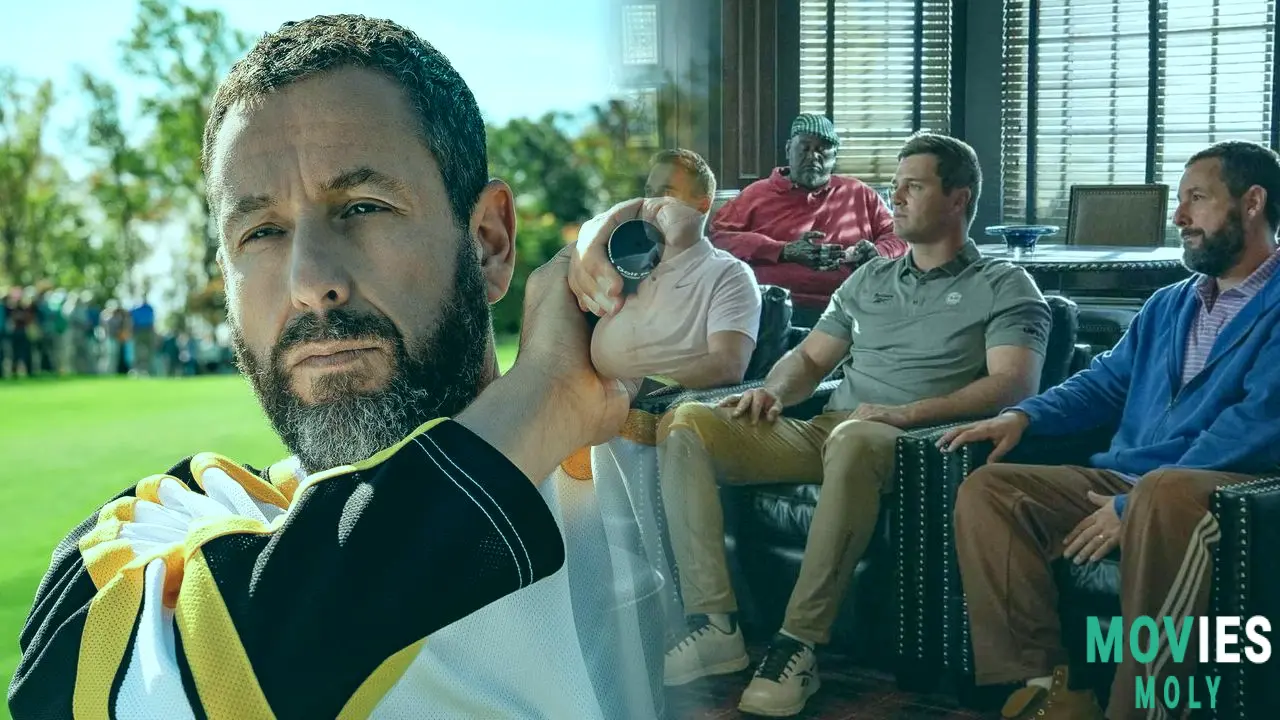Happy Gilmore 2 debuted on Netflix with a boom, garnering 46.7 million views in its first three days and marking the streaming service's greatest U.S. film opening ever. Fans are ecstatic at Adam Sandler's return as the golf-club wielding hockey player, which brings back the classic mix of humor and passion that we all love. Among the celebrity visits by Travis Kelce and Bad Bunny, as well as the general excitement, there is one big, dramatic incident that has everyone talking: the destiny of Happy's wife, Virginia Venit.
The majority of the discussion surrounding the Happy Gilmore sequel has centered on its massive success and all of the entertaining cameos. However, few are delving into the "why" of one of the film's most major plot points. We're here to look closely at what happened to Virginia, why the designers took this difficult decision, and how it affects Happy's new path.
Who Was Virginia Venit? A Look Back on Happy's LoveVirginia's Role in The Original Happy Gilmore
For fans of the original Happy Gilmore, Virginia Venit (played by the wonderful Julie Bowen) was more than just a romantic interest. She was the calm in Happy's storm, a firm hand attempting to direct his wild energy. Virginia was the pro golf tour's public relations director, and she took a chance on Happy, looking beyond his rage to the good guy underneath. She guided him through the strange world of professional golf and even taught him how to putt. There's no denying that she was an important element of his achievement and personal development in the first film.
Virginia wasn't just there to be good; she challenged Happy, called him out when he was acting rudely, and actually cared about him. She was a brilliant, capable lady in her own right, and her relationship with Happy felt genuine and deserved. She represented the possibility of him living a regular, happy life that included more than just winning tournaments. Her presence kept him grounded, and it's difficult to picture the original film without her.
The Tragic Beginning of Happy Gilmore 2: What Happened to Virginia?

Is Virginia Venit killed in Happy Gilmore 2? Unfortunately, the answer is "yes." The film begins with a gloomy tone, rapidly showing that Virginia has died. This is not a minor issue; it is the driving cause for Happy's current situation and return to golf. The film depicts Happy as a retired athlete who is suffering with alcohol as a result of his tragic loss.
This sad tragedy provides a radically new beginning point for Happy's character. Instead of the hilarious, hot-headed underdog we recall, we meet a guy burdened by sadness. It's a daring approach for a comedy sequel, as it quickly informs the audience that this isn't just a retread of previous jokes. The loss of Virginia is meant to give Happy a fresh, very personal reason to get back on the green: to support his daughter's pricey dancing school in Paris.
The impact of Virginia's death on Happy Gilmore's journey

Happy's Motivation in the Sequel
Virginia's death significantly changes Happy Gilmore's journey. In the first film, he aimed to save his grandmother's house. This time, it's about providing for his daughter, a responsibility he bears alone after losing his wife. This transition gives him a deeper, more mature motivation to play golf again. It's not just about vengeance or proving oneself; it's about family and legacy. This makes his troubles, both on and off the course, seem more substantial.
Happy must face his obstacles without Virginia, who serves as his customary emotional anchor. This encourages him to grow in new ways, even though he is still prone to his old outbursts. The film utilizes her death to lend a dimension of melancholy and seriousness to the comedy, making Happy's victories feel even more won given the anguish he's going through.
Adam Sandler and Tim Herlihy explain why the creators chose this path.

Behind-the-Scenes Decisions by Writers
While Adam Sandler and co-writer Tim Herlihy's explicit statements on why Virginia died have not been publicly publicized, we can infer some creative choices. The choice to write out such a beloved character is not taken lightly. It's fair to conclude that this was an intentional decision to offer Happy a new, compelling cause to return to the story.
By omitting Virginia, the creators avoid just rehashing the same romance plot. It compels Happy to stand on his own and face different types of emotional challenges. This allows for a more in-depth analysis of his character, demonstrating how he copes with actual loss and steps up as a single father. It offers the sequel a new emotional core, moving away from mere slapstick and toward something more meaningful. It's a method to demonstrate growth, even in a comedy, and to give the new film a distinct identity rather than simply being a duplicate copy.
Fans and critics react to Virginia's fate.
Social Media Buzz and Audience Sentiment
The news of Virginia Venit's death has undoubtedly prompted a lot of discussion among fans online. Many viewers were astonished and disappointed by the choice, citing a link to Julie Bowen's character in the original film. The emotional impact of this story element has struck a chord with many individuals, demonstrating that even in a comedy, spectators are sincerely concerned about the characters' well-being.
Here's what some admirers say:
@YourSiteName: The terrible reality about Virginia Venit in #HappyGilmore2 comes home. It's not just a story twist; it's the emotional center of Happy's new journey. #HappyGilmore
@YourSiteName, did Virginia Venit actually die in #HappyGilmore2? Yes, and it changes everything for Adam Sandler's legendary character. The creators made a brave move! #HappyGilmoreSequel
Critics have also noticed a shift in tone following Virginia's death. While some may appreciate the pure, unadulterated comedy of the first film, others view this as a sign that the sequel is attempting to do something different and add depth to Happy's story. It's a risk, but it appears to be paying off in terms of stirring debate and giving the film a distinct identity.
@YourSiteName: Fans are talking about Virginia Venit's destiny on #HappyGilmore2. The decision to write her out was difficult but critical to Happy's redemption story. #AdamSandler
Julie Bowen's Legacy in the Happy Gilmore Franchise.
Even though Virginia Venit is no longer present in the universe of Happy Gilmore 2, Julie Bowen's portrayal in the original film made an indelible impression. She contributed warmth, wit, and excellent comedic timing to the character, making her an unforgettable aspect of Happy's journey. Bowen's portrayal helped to make Virginia a character that fans actually cared about, which is why her departure in the sequel is so significant.
Her impact on the franchise is undeniable: she helped shape Happy's transformation from a hot-headed amateur to a more grounded, albeit eccentric, golf star. Her character's generosity and kindness provided an excellent contrast to Happy's flaws. It's a tribute to Bowen's work that Virginia's fate in the sequel has such emotional resonance for the audience.
@YourSiteName: Julie Bowen's Virginia Venit was a popular character. Her absence in #HappyGilmore2 creates a melancholy tone for the sequel. What are your thoughts? #HappyGilmore
Connect the Dots: The 'Disposable Love Interest' TropeExamples of 'Disposable Love Interest' in Film
While Virginia Venit's death is emotionally affecting, it also highlights a prevalent plot device in films: the "disposable love interest" stereotype. This occurs when a character's romantic partner is removed from the story, usually through death, in order to provide new motivation for the primary hero or to pave the way for a different type of plot. We've seen this in numerous films and television series, when the death of a loved one propels the protagonist on a new, typically darker, path.
For example, in many action films, the hero's wife or girlfriend is murdered early on to fuel his need for vengeance or justice. While Happy Gilmore 2 is not a revenge story, Virginia's death has a similar narrative function: it thrusts Happy into a new situation, forcing him to mature. It allows you to swiftly develop significant emotional stakes without having to start a new love connection from scratch. Of course, this can occasionally feel a little convenient for the hero's plot, but in Happy Gilmore 2, it appears to be employed to bring genuine melancholy and a new level of depth.
@YourSiteName: Virginia Venit discusses the 'Disposable Love Interest' cliché on #HappyGilmore2. How does her death affect the storyline and Happy's motivations? #MovieAnalysis
The decision to apply this trope here is intriguing since it takes a beloved comedy character and assigns him a very real, very tragic situation to solve. It demonstrates that even in a sequel to a famous comedy, the creators are willing to take risks and tackle more serious subjects.
The massive viewership ratings for Happy Gilmore 2 show that Adam Sandler's return to the golf course was eagerly anticipated. But it's the unexpected, emotional decision to write off Virginia Venit that actually distinguishes this sequel. It gives Happy Gilmore a new, compelling cause to battle, making his quest more exciting and important. This daring decision has certainly gotten people talking, and it's evident that Virginia's memory will continue to affect Happy's story, even though she's no longer with him.






